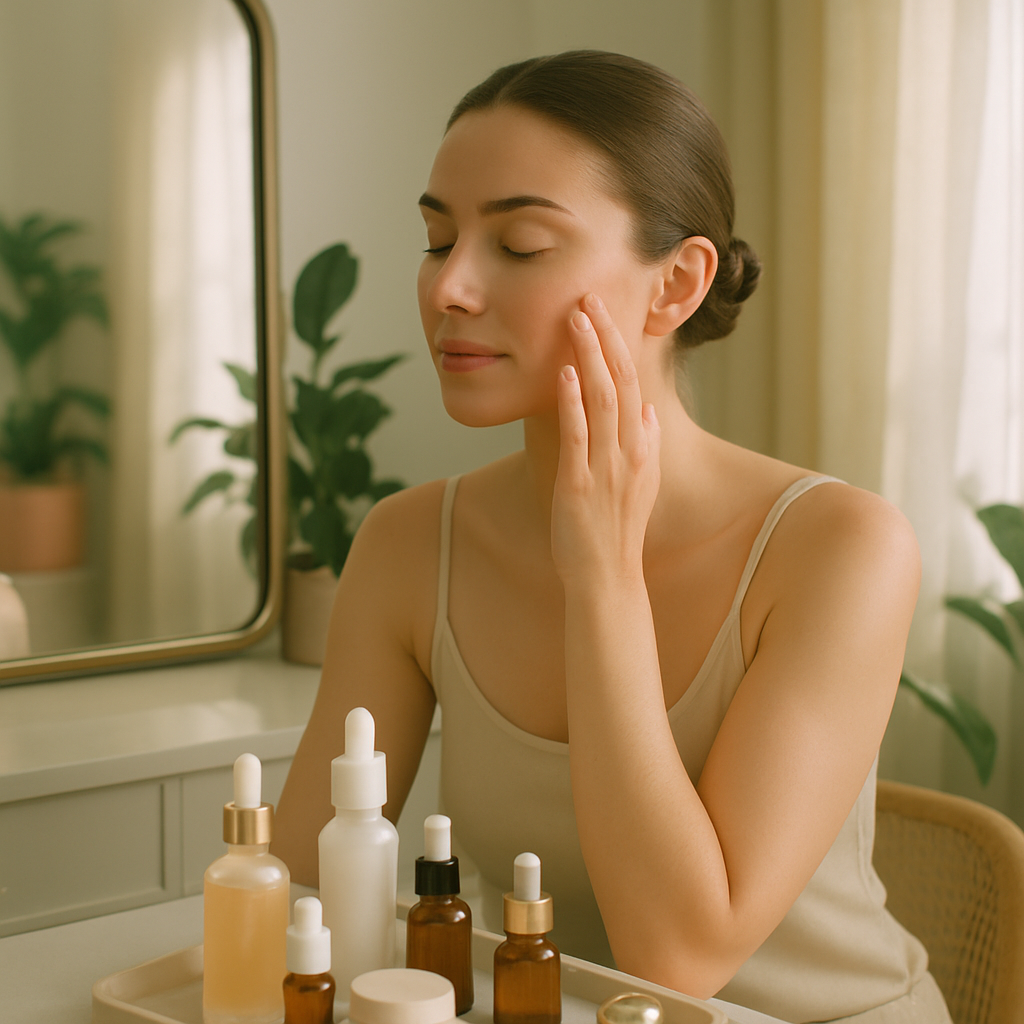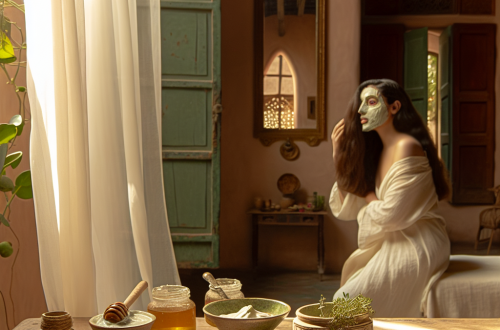Unlocking the Secrets of Skincare Layering for Radiant Results

Skincare layering might sound like just another beauty buzzword, but trust me, it’s literally a game-changer for your skin goals. I’ve spent way too many hours scrolling through #skintok and experimenting with different routines, and I’m obsessed with how strategic product application can transform your complexion. Let’s break down this whole science so you can achieve that glazed donut look we’re all chasing!
The foundation of effective skincare layering isn’t just slapping on random products in random order (guilty as charged I used to do this all the time). It’s about understanding how ingredients interact and absorb into your skin. Think of your skin as a sponge it can only soak up so much at once, and certain ingredients need to reach different layers to work their magic.
Most dermatologists recommend following the “thinnest to thickest” rule, which makes total sense when you think about it. Lighter, water-based products should go on first because they can penetrate deeper, while heavier creams and oils seal everything in. This approach maximizes absorption and prevents product pilling that annoying situation when products ball up on your skin instead of absorbing (the absolute worst feeling).
Before diving into specific routines, let’s get one thing straight: your skin is unique. What works for your bestie or that influencer you follow might not work for you. I learned this the hard way after copying a 12-step routine that left my sensitive skin irritated and breaking out for weeks. Pay attention to how your skin responds and adjust accordingly.
The Art of Morning vs. Night Layering
Morning and evening skincare routines serve different purposes, and understanding this distinction can significantly improve your results.
Your AM routine should focus on protection. After cleansing with a gentle face wash (I use CeraVe Hydrating Cleanser because my skin gets super dry), apply antioxidant serums like vitamin C. Vitamin C not only brightens skin but also fights free radicals from pollution and UV rays. I’ve been using Timeless 20% Vitamin C + E Ferulic Acid Serum, and the glow is real!
Next comes moisturizer. During hot summer months, I switch to something lightweight like Neutrogena Hydro Boost, but in winter, my skin drinks up thicker formulas like First Aid Beauty Ultra Repair Cream. The final and non-negotiable step is sunscreen minimum SPF 30, but preferably 50. My current fave is the Supergoop Unseen Sunscreen because it doesn’t leave that ghostly white cast on my medium skin tone.
Your PM routine, on the other hand, should focus on repair and treatment. This is when I bring out the big guns retinoids, exfoliating acids, and targeted treatments. After double cleansing (oil cleanser followed by water-based cleanser), I apply treatments based on what my skin needs that day.
Some nights, I’ll use Paula’s Choice 2% BHA Liquid Exfoliant to clear my pores, while other nights I’ll apply The Ordinary’s Granactive Retinoid 2% Emulsion to target fine lines. I never use both on the same night though learned that mistake after my skin freaked out last year.
After active ingredients, I layer on a hydrating serum with hyaluronic acid, followed by a nourishing moisturizer. Sometimes I’ll seal everything with a facial oil like The Ordinary’s Rosehip Seed Oil, especially in winter when my skin feels like the Sahara Desert.
Strategic Combinations for Specific Skin Concerns
The real power of skincare layering comes from combining ingredients that complement each other while avoiding combinations that either cancel each other out or cause irritation.
For acne-prone skin like mine, benzoyl peroxide works well with niacinamide. I use a 2.5% benzoyl peroxide spot treatment on active breakouts, wait about 20 minutes, then apply The Ordinary Niacinamide 10% + Zinc 1% serum all over. The benzoyl peroxide kills acne-causing bacteria while niacinamide controls oil production and reduces inflammation. This combo has literally saved my skin during hormonal breakouts.
For hyperpigmentation and dark spots, vitamin C paired with sunscreen during the day creates a powerful brightening duo. At night, ingredients like alpha arbutin, kojic acid, or tranexamic acid can target stubborn discoloration. I’ve been using Faded by Topicals for my post-acne marks, and after three months of consistent use, they’ve faded significantly.
For anti-aging concerns, retinol and peptides make a dream team. Retinol accelerates cell turnover while peptides support collagen production. My mom swears by using The Ordinary Buffet (a peptide serum) followed by a retinol cream, and her skin looks amazing at 52.
What about ingredients that don’t play well together? Vitamin C and retinol can destabilize each other, so I use vitamin C in the morning and retinol at night. Direct acids (like AHAs and BHAs) can make retinol more irritating, so I alternate these on different nights. And niacinamide might reduce the effectiveness of vitamin C, so I keep these in separate routines.
One mistake I made when starting my skincare journey was using too many active ingredients at once. My skin barrier got so damaged that even water would sting! Now I limit myself to 1-2 active ingredients per routine and focus on hydration and barrier support.
Wait times between products also matter. After applying active ingredients like AHAs or vitamin C, waiting 15-30 minutes allows them to work at their optimal pH before applying the next product. But honestly, who has time for that on busy mornings? On workdays, I wait about 2-3 minutes between layers, which seems to work fine for me.
The concept of skin cycling has recently gained popularity, and for good reason. Instead of using active ingredients daily, you rotate them throughout the week. A typical cycle might include: exfoliation night, retinoid night, and two recovery nights focused on hydration. This approach prevents overexfoliation and gives your skin time to recover. I’ve been following this pattern for about six months, and my skin has never been clearer or more balanced.
Layering isn’t just about the products application technique matters too. Patting or pressing products into the skin is generally more effective than rubbing, which can cause friction and irritation. For serums, I use a gentle pressing motion with my fingertips, allowing each layer to absorb before applying the next.
Hydration is the foundation of any effective layering routine. Properly hydrated skin absorbs active ingredients better and is less likely to become irritated. The “sandwich method” applying actives between layers of hydrating products can reduce irritation from potent ingredients like retinoids. When I started using tretinoin (prescription retinoid), my dermatologist recommended applying moisturizer before and after to buffer it, which helped me avoid the dreaded “tretinoin purge” that many people experience.
Environmental factors also influence how you should layer products. In humid climates, lighter layers work better, while dry climates call for richer formulations. When I visited Arizona last summer, I had to completely overhaul my routine to include more hydrating layers because my usual routine left my skin parched.
Consistency is key with skincare layering. Results take time typically 4-6 weeks for most active ingredients to show visible changes, and 12 weeks for more significant transformation. I keep a skincare journal with photos to track progress, which helps me stay motivated during the waiting period.
For those just starting with skincare layering, begin with a basic routine: cleanser, treatment (like niacinamide or vitamin C), moisturizer, and sunscreen (for daytime). Once your skin adjusts, gradually introduce additional products one at a time, waiting at least two weeks before adding another. This approach helps identify what works for your skin and what might cause reactions.
Skincare layering doesn’t have to break the bank. Many effective products are available at drugstore prices. The Ordinary, The Inkey List, and CeraVe offer science-backed formulations at affordable price points. I mix high-end products (like my splurge-worthy vitamin C serum) with budget-friendly basics (like my simple moisturizer).
Don’t forget about seasonal adjustments to your layering routine. In summer, I focus on lightweight hydration and increased sun protection, while winter calls for more nourishing layers and occlusive final steps to prevent moisture loss. My skin gets so dry in winter that I sometimes add a few drops of facial oil to my moisturizer for extra nourishment.
Skincare layering is both an art and a science. By understanding the principles behind product order, ingredient compatibility, and your skin’s unique needs, you can create a routine that delivers visible results. Start simple, be consistent, and pay attention to how your skin responds. With patience and the right approach, you’ll unlock your skin’s potential for that coveted healthy glow.
And remember skincare should be enjoyable, not stressful. Some days, a basic three-step routine is all you need or have energy for, and that’s totally okay. Your skin is a marathon, not a sprint, and finding a sustainable approach to skincare layering will serve you better than an elaborate but inconsistent routine. Now go get that glow!


